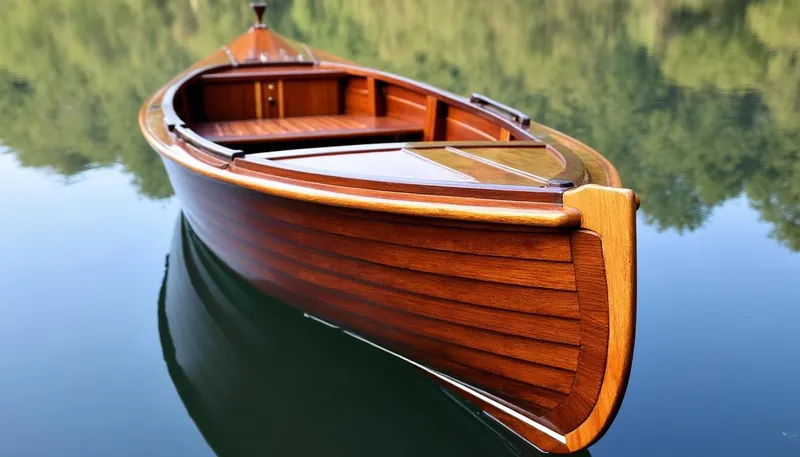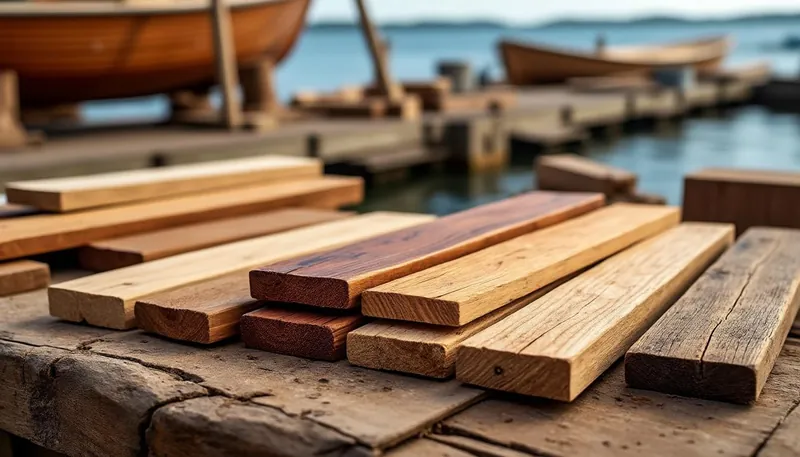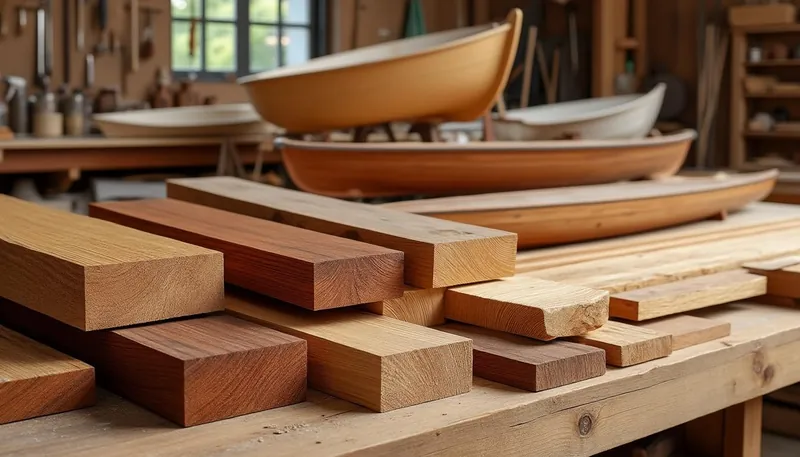Building a boat is not just a task; it’s an art that combines science, craftsmanship, and an understanding of materials. One of the most crucial decisions a boat builder faces is choosing the right type of wood for the boat hull. The choice of wood can affect the boat’s durability, performance, and aesthetic appeal. The market offers a plethora of options, each with its unique properties and qualities. From the renowned strength of mahogany to the lightweight efficiency of cedar, each wood type has its charming features. Let’s dive into the nuanced landscape of boat hull woods and discover the best choices available in 2025.
Brief:
- 🌳 Durability: Wood choice impacts hull longevity.
- ⚓ Performance: Different woods yield varying responses in water.
- 💰 Cost-Effective options: Affordable woods can be durable too.
- 🛠️ Workability: Some woods are easier to manipulate than others.
- 🌊 Aesthetics: The beauty of wood contributes significantly to the boat’s charm.
The Essentials of Wood Selection for Boat Hulls
Let’s kick off our exploration with the essentials! Selecting the right wood for a boat hull is not just about picking something that looks nice. You want wood that can withstand the harsh realities of aquatic environments—think salty water, wet conditions, and temperature changes. Moreover, every wood type comes with characteristics that make it suitable (or unsuitable) for hull construction.
- 🏆 Strength and Durability: The wood must resist both the wear from water and the inevitable bumps of marine life.
- 🔒 Resistance to Rot: Many woods will decay after prolonged exposure to moisture if they aren’t specifically chosen for their rot resistance.
- ⚖️ Weight: A boat that’s too heavy will struggle to float properly. Therefore, the weight of the wood used in the hull is an essential factor.
- 🔧 Ease of Work: Some woods are easier to cut and shape than others, impacting build time and effort.
- 🦠 Pest Resistance: Considering the likelihood of pests like termites, it’s vital to select wood types that resist these threats.
A good way to summarize this is through a quick table highlighting key properties of common boat woods.
| Type of Wood | Strength | Rot Resistance | Weight | Workability |
|---|---|---|---|---|
| Cedar | Medium | High | Light | High |
| Mahogany | High | Medium | Medium | Medium |
| Iroko | High | High | Medium | Low |
| Marine Plywood | High | High | Low | High |
| Douglas Fir | Medium | Medium | Medium | High |
Engaging with the Right Wood Types
Now that we have covered the essentials, let’s discuss specific types of wood that have distinguished themselves in boat building. Each type brings unique attributes that cater to different needs and budgets.
Iroko: The African Teak
Iroko offers an appealing blend of strength and resistance, often aptly dubbed “African Teak.” Its dense texture and high durability make it a sought-after option for hulls and deck surfaces. With natural oils that resist marine borers, Iroko stands tall against pest problems. It has a beautiful grain pattern, with colors that range from yellow to medium brown, adding a touch of elegance to any vessel.
Acajou: African Mahogany
Renowned for its reddish-brown hues, Acajou is a staple in decorative boatwork. Its straight grain eases the manufacturing process, allowing for seamless finishes on interior elements. Ideal applications include hull panels and trims. Its aesthetic appeal is complemented by stability and durability, making it a premier choice for interior joinery and structural components.

Mukulungu: Strength Meets Durability
Native to Central Africa, Mukulungu is a powerhouse when it comes to strength and density. Not only does it resist decay and termites, but it also gains hardness when immersed in water, making it a robust option for keels and ribs. With beautiful brown shades and a unique finish, it creates a striking appearance on any boat.
Lightweights: Cedar and Douglas Fir
On the opposite end of the spectrum is Western Red Cedar, celebrated for its lightweight nature. It’s no wonder that it’s a top choice for small boat builders—its buoyancy enhances performance and keeps construction manageable. Plus, it’s resistant to insects and rot, which is a significant advantage for longevity.
Douglas Fir, while slightly heavier, strikes an excellent balance between strength and weight, making it solid for structural components like masts and spars. Its versatility allows it to cater to both structural and fine detail work.
Marine Plywood: The Engineered Marvel
For those looking for consistency and strength in a boat plan, marine plywood is the go-to option. Engineered specifically for marine use, it withstands moisture and won’t warp or delaminate. It’s the unsung hero in many boat builds, providing a robust platform for hull construction while being cost-effective.
Marine plywood is made of several layers of wood fibers glued together, resulting in both durability and lightness. Many builders recommend using products like Joubert Okoume or BS1088 Lloyds Approved marine plywood, which offer superior water resistance.

Finishing Techniques for Wooden Boat Huls
Your wood choice being perfect doesn’t end the story; the right finish can bring it all together. When it comes to marine applications, considering products like Epifanes or Awlgrip is worthwhile. These finishes enhance the wood’s natural features while ensuring it withstands the relentless elements.
When finishing your wooden boat, here are some practices to consider:
- 🧴 First Coating: Choose a high-quality sealer to lock in the wood’s natural moisture and protect it from rot.
- 🔍 Inspection: Regularly check for any signs of peeling or damage and reapply finishes as necessary.
- 🛡️ Layering: More thin coats (3-5) are generally better than a single thick layer for durability and aesthetics.
- ⏳ Curing Time: Ensure adequate curing time between coatings to achieve the best bond.
- 🔄 Periodic Maintenance: Schedule regular touch-ups on the finish to keep it looking pristine and protective.
Finding Your Best Fit for 2025
The selection of wood for your boat’s hull says a lot about the longevity and performance of the vessel itself. There’s no one-size-fits-all answer. It entirely depends on your specific needs, whether it be cost, aesthetic appeal, or physical properties. Knowing the characteristics of different types of wood is essential for making an informed decision.
With 2025 upon us, the market and technology surrounding boat building continue to evolve. Whether you opt for a classic like Iroko or something modern like engineered marine plywood, make sure it suits your boating lifestyle.
What is the best wood for building a boat hull?
The best wood type depends on your needs. Iroko is durable, while cedar is lightweight and resistant to rot.
How can I maintain the wood in my boat?
Regular inspections and reapplication of finishes like Awlgrip will extend the life of the wood.
Is marine plywood worth it?
Absolutely! It offers excellent durability and resistance to moisture, making it ideal for hull construction.
What are the benefits of using mahogany?
Mahogany provides aesthetic appeal and durability, making it great for both structural and decorative elements.
Can I use treated wood for boat building?
Treated wood is possible; however, ensure it’s safe for marine environments and won’t leach toxic chemicals.

